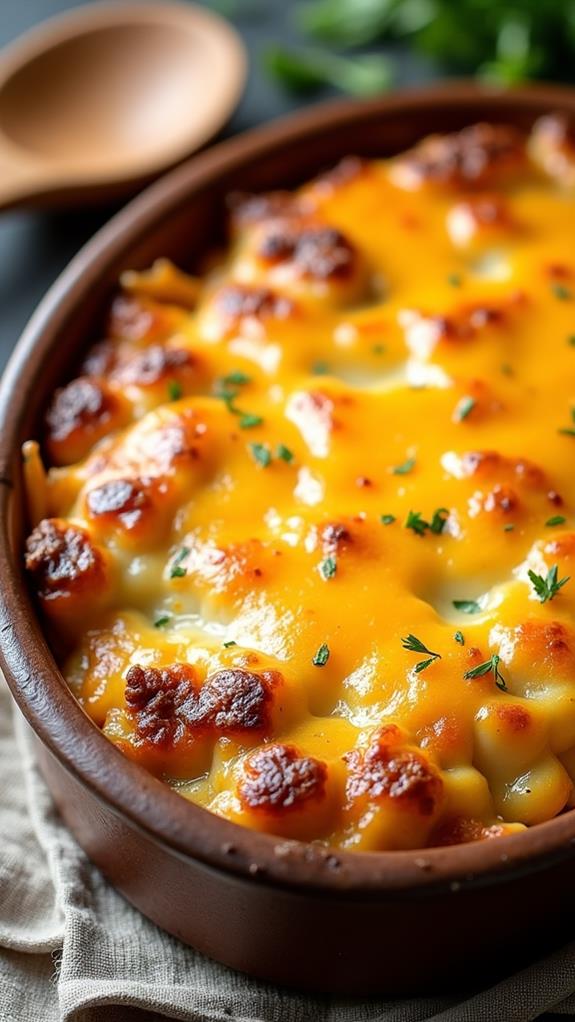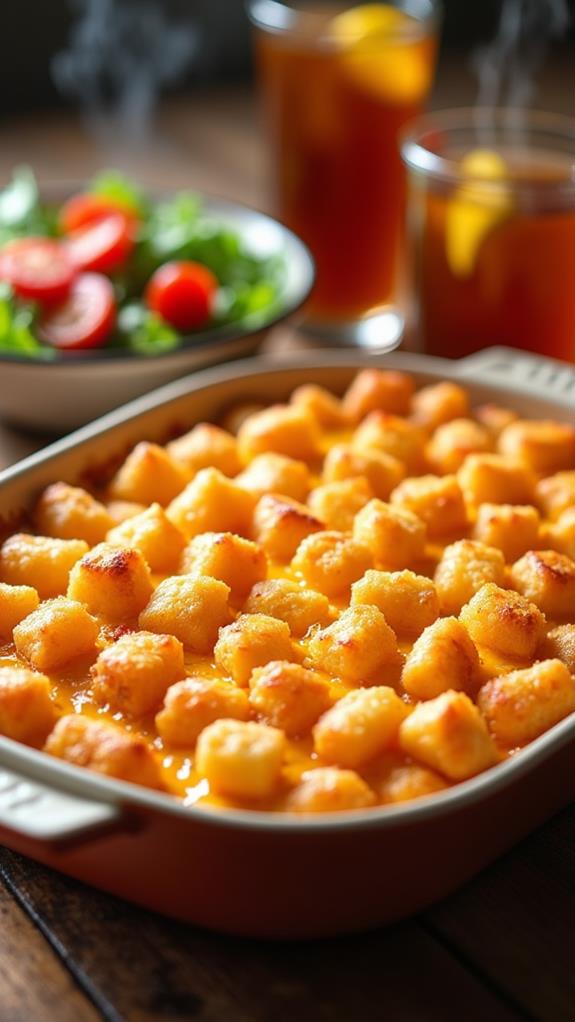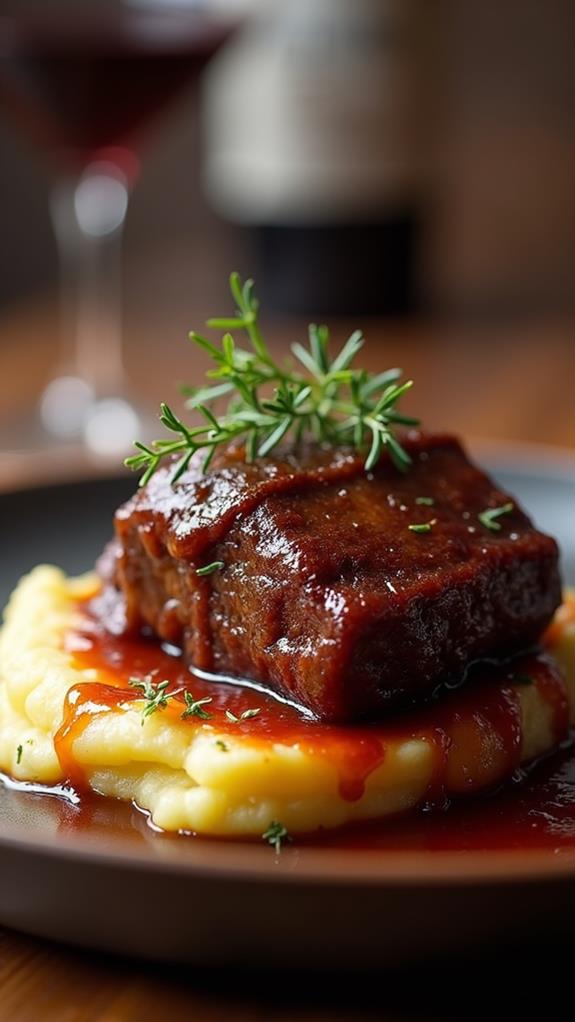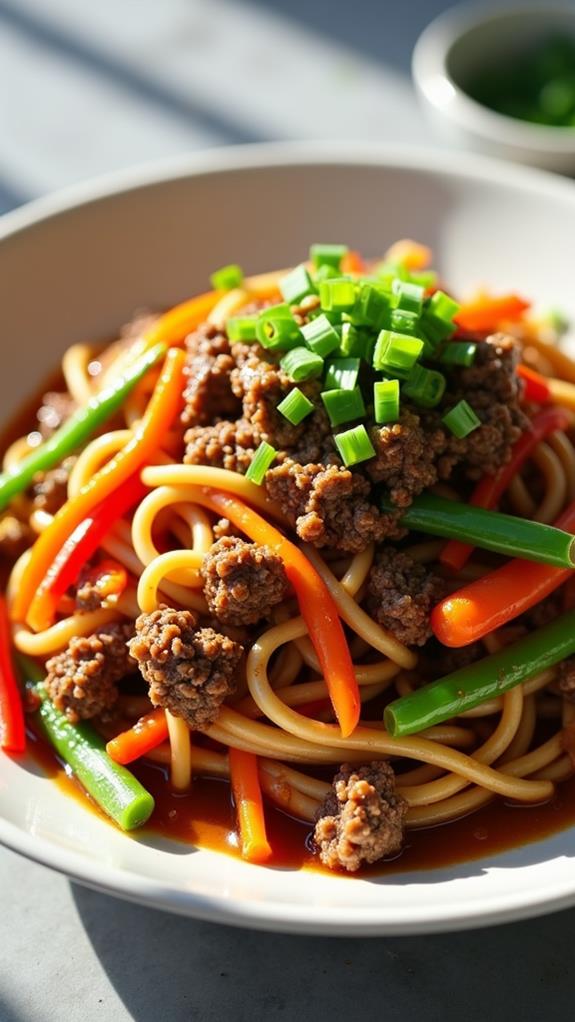Old Fashioned Beef Stew Recipe
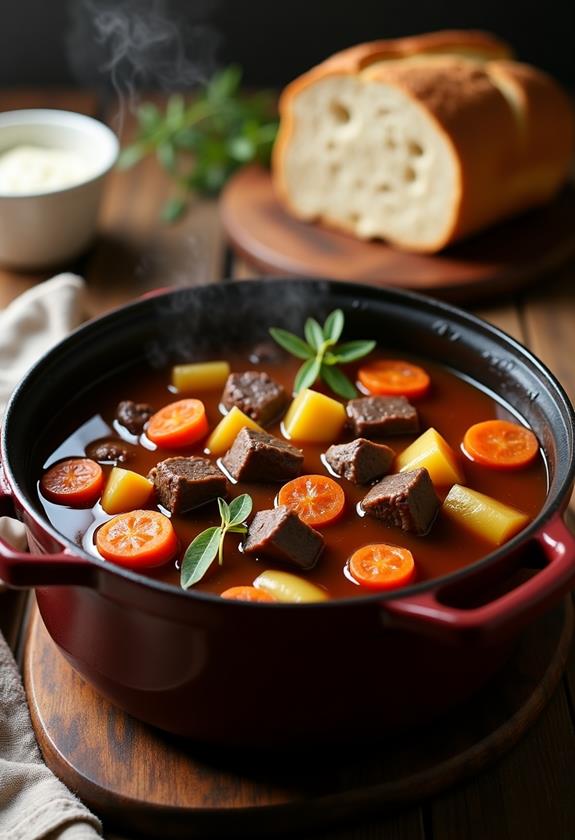
There’s nothing quite like the aroma of beef stew simmering on the stove on a chilly evening. This Old Fashioned Beef Stew recipe brings together tender chunks of beef, hearty vegetables, and a rich, savory broth that’ll warm you from the inside out.
I’ve perfected this recipe over the years, and it never fails to deliver comfort in a bowl. Whether you’re feeding a hungry family or meal prepping for the week, this classic stew is guaranteed to satisfy. Let me walk you through creating this timeless dish that’s been bringing families together for generations.
What is “Old Fashioned Beef Stew”?
Old Fashioned Beef Stew is a traditional comfort food that combines tender beef chuck roast with classic vegetables like carrots, potatoes, and onions in a rich, flavorful broth. This hearty one-pot meal has been a staple in American households for decades.
The “old fashioned” approach means we’re using time-tested techniques like browning the meat for depth of flavor and slowly simmering the stew to achieve that perfect, fall-apart tenderness. Unlike modern shortcuts, this recipe relies on patience and simple ingredients to create something truly special.
Ingredients List for Old Fashioned Beef Stew
- 2 pounds beef chuck roast, cut into 2-inch chunks
- 3 tablespoons all-purpose flour
- 2 tablespoons vegetable oil
- 1 large onion, diced
- 3 cloves garlic, minced
- 4 cups beef broth
- 2 tablespoons tomato paste
- 1 tablespoon Worcestershire sauce
- 2 bay leaves
- 1 teaspoon dried thyme
- 1 teaspoon salt
- ½ teaspoon black pepper
- 4 large carrots, peeled and cut into chunks
- 1 pound baby potatoes, halved (or 3 large potatoes, cubed)
- 2 stalks celery, chopped
- 2 tablespoons fresh parsley, chopped (for garnish)
How to Cook Old Fashioned Beef Stew: A Step-by-Step Guide
Creating the perfect Old Fashioned Beef Stew requires patience and attention to detail. Here’s my tried-and-true method that delivers exceptional results every time:
1. Prepare the Beef:
- Pat the beef chunks completely dry with paper towels.
- Season the meat generously with salt and pepper on all sides.
- Toss the seasoned beef with flour in a large bowl, ensuring each piece is well coated.
- This flour coating will help create a beautiful crust and thicken the stew naturally.
2. Brown the Meat:
- Heat vegetable oil in a heavy-bottomed Dutch oven or large pot over medium-high heat.
- Working in batches to avoid overcrowding, brown the beef chunks on all sides.
- Each batch should take about 6-8 minutes to develop a deep, golden-brown crust.
- Transfer browned beef to a plate and set aside.
3. Build the Flavor Base:
- In the same pot, add diced onions to the remaining oil and drippings.
- Cook for 3-4 minutes until the onions are softened and translucent.
- Add minced garlic and cook for another 30 seconds until fragrant.
- Stir in tomato paste and cook for 1 minute to deepen its flavor.
4. Deglaze and Combine:
- Pour in the beef broth gradually, scraping up any browned bits from the bottom of the pot.
- These browned bits are pure flavor gold that will enrich your stew.
- Add Worcestershire sauce, bay leaves, thyme, and return the browned beef to the pot.
- Bring the mixture to a boil, then reduce heat to low.
5. Slow Simmer:
- Cover the pot and let the stew simmer gently for 1.5 to 2 hours.
- The beef should be fork-tender when it’s ready.
- Stir occasionally and add more broth if needed to maintain proper consistency.
6. Add the Vegetables:
- Add carrots, potatoes, and celery to the pot.
- Continue simmering for another 30-45 minutes until vegetables are tender.
- Remove bay leaves before serving and adjust seasoning with salt and pepper.
- Garnish with fresh chopped parsley for a pop of color and freshness.
Substitutions and Variations
I love how adaptable this Old Fashioned Beef Stew recipe can be. Here are some substitutions and variations I’ve tried over the years:
- Beef Cut: If chuck roast isn’t available, use beef short ribs or stew meat, though cooking times may vary slightly.
- Vegetables: Add mushrooms, parsnips, or turnips for extra depth. Frozen peas can be stirred in during the last 5 minutes of cooking.
- Liquid Base: Replace some beef broth with red wine for a richer flavor profile.
- Herbs: Fresh thyme or rosemary can replace dried herbs, but use half the amount since fresh herbs are more potent.
- Thickening: For a thicker stew, mix 2 tablespoons cornstarch with cold water and stir in during the last 10 minutes.
Common Mistakes to Avoid
After making this stew countless times, I’ve learned to avoid these common pitfalls:
- Skipping the Browning: Never skip browning the beef. This step creates the foundation of flavor for your entire stew.
- Overcrowding the Pan: Brown meat in batches to ensure proper searing rather than steaming.
- Rushing the Process: Low and slow is the key. High heat will make the meat tough and chewy.
- Adding Vegetables Too Early: Potatoes and carrots should go in later to prevent them from becoming mushy.
- Not Seasoning Properly: Taste and adjust seasoning throughout the cooking process.
How to Serve Old Fashioned Beef Stew
This hearty stew is perfect as a complete meal, but I love pairing it with some classic accompaniments. Serve it with crusty bread or warm dinner rolls for sopping up that delicious broth.
A simple green salad with vinaigrette provides a nice contrast to the rich stew. For special occasions, I like to serve it over mashed potatoes or egg noodles for an extra comforting meal.
Presentation Ideas for Old Fashioned Beef Stew
While beef stew is inherently rustic, you can elevate its presentation with these simple touches:
- Rustic Bowls: Serve in deep, wide bowls to showcase the colorful vegetables and rich broth.
- Fresh Herb Garnish: A sprinkle of fresh parsley, thyme, or chives adds color and freshness.
- Crusty Bread: Place a thick slice of crusty bread on the side or floating on top for an authentic touch.
- Dollop of Cream: A small spoonful of sour cream or crème fraîche adds richness and visual appeal.
Old Fashioned Beef Stew Recipe Tips
Here are my top tips for ensuring your beef stew turns out perfectly every time:
- Choose the Right Cut: Chuck roast has the perfect fat-to-meat ratio for stewing and becomes incredibly tender when cooked slowly.
- Temperature Control: Keep the simmer gentle; violent bubbling will make the meat tough.
- Make It Ahead: This stew tastes even better the next day as flavors have time to meld together.
- Don’t Lift the Lid: Resist the urge to check constantly; this releases heat and extends cooking time.
- Quality Broth Matters: Use good-quality beef broth or homemade stock for the best flavor foundation.
How to Store Old Fashioned Beef Stew
Allow the beef stew to cool completely before storing it in the refrigerator. Transfer to airtight containers and refrigerate for up to 4 days. The stew actually improves with time as the flavors continue to develop.
For longer storage, freeze portions in freezer-safe containers for up to 3 months. When reheating, add a splash of broth if the stew has thickened too much during storage.
Frequently Asked Questions (FAQs)
Q: Can I make Old Fashioned Beef Stew in a slow cooker?
A: Absolutely! Brown the meat and sauté the onions first, then transfer everything to your slow cooker. Cook on low for 6-8 hours or high for 3-4 hours.
Q: Why is my beef stew meat tough?
A: Tough meat usually means it needs more cooking time. Beef chuck requires long, slow cooking to break down the connective tissues and become tender.
Q: Can I use frozen vegetables?
A: Fresh vegetables work best, but you can use frozen carrots and potatoes. Add them during the last hour of cooking to prevent mushiness.
Q: How do I thicken my beef stew if it’s too thin?
A: Mix equal parts flour and cold water to make a slurry, then stir it into the simmering stew. Cook for 10 more minutes to thicken.
Q: Can I make this stew dairy-free?
A: This recipe is naturally dairy-free! Just skip any cream garnish and ensure your beef broth doesn’t contain dairy.
Q: What’s the best way to reheat leftover stew?
A: Reheat gently on the stovetop over medium-low heat, stirring occasionally. Add a splash of broth if it’s too thick.
Conclusion
This Old Fashioned Beef Stew recipe represents everything I love about comfort food cooking. It’s simple, honest ingredients transformed through patience and care into something absolutely delicious. The tender beef, perfectly cooked vegetables, and rich, savory broth create a meal that’s both satisfying and soul-warming.
I’ve served this stew to countless family dinners and potluck gatherings, and it never fails to receive compliments. There’s something magical about how the simple act of slow cooking transforms these humble ingredients into a dish that brings people together around the dinner table.
Take your time with this recipe, embrace the slow cooking process, and enjoy the wonderful aromas filling your kitchen. Your patience will be rewarded with a stew that’s worthy of becoming your family’s new favorite comfort food. Happy cooking!

